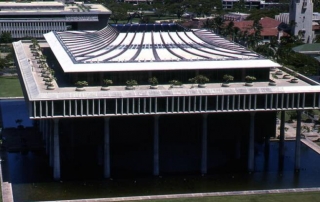Ask Our Senators to Support Historic Tax Credits
Last month, leaders of the Senate Finance Committee asked all Senators to identify, by July 26, which tax breaks, deductions and credits should be included in a comprehensive tax reform proposal. The letter advocates a "blank slate" approach to tax reform -- starting from scratch and only adopting proposed tax credits, deductions or other provisions if there is special justification. This means that the historic tax credit could be eliminated from the tax code if Senators do not note their support for the program. The letter suggests deductions will be included only if they help grow the economy, make the tax code fairer or effectively promote other important policy objectives. The Historic Rehabilitation Tax Credit meets these tests, and has proven to be an effective means to create jobs, stimulate the economy, and support local businesses, as well as the primary public policy objective of preserving historic buildings and structures that give a sense of place, meaning and identity to our communities. Historic Hawai‘i Foundation has joined our preservation partners in reaching out to Senate offices asking them to include the federal Historic Tax Credit among the priorities they list for the Finance Committee. Please join us in this important effort and reach out to Senators Brian Schatz and Mazie Hirono on behalf of the historic tax credit. A sample email message is available for download to the right that can be customized with your own comments. Senator Mazie Hirono 300 Ala Moana Boulevard, Room 3-106 Honolulu, HI 96850 Phone: (808) 522-8970 Fax: (808) 545-4683 Online form: http://www.hirono.senate.gov/contact/email Senator Brian Schatz 300 Ala Moana Boulevard, Room 7-212 Honolulu, HI 96850 Phone: (808) 523-2061 Fax: (808) 523-2065 Online form: http://www.schatz.senate.gov/contact.cfm Available for download is a summary [...]




